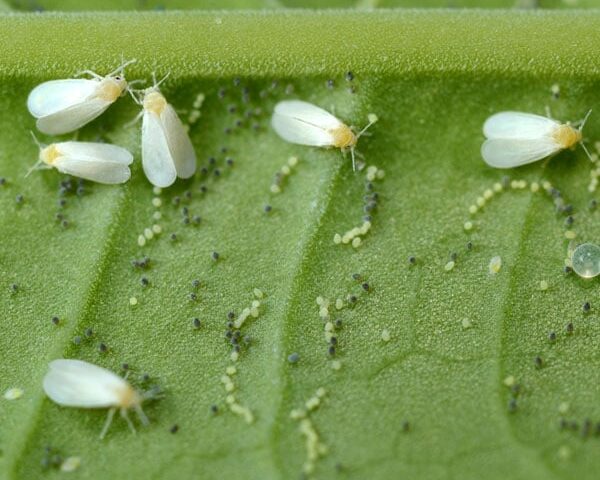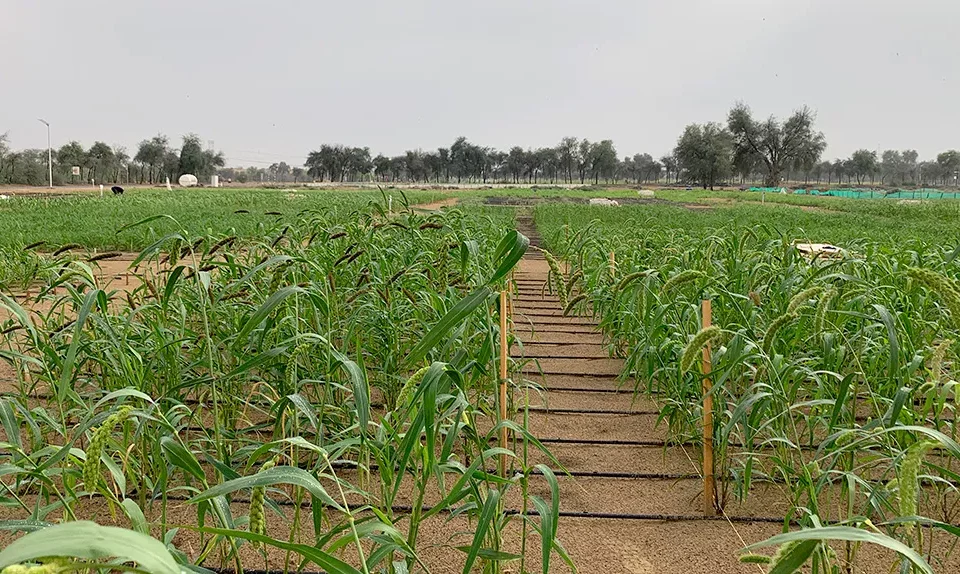
Precision Agriculture New Tools for Efficient Farming
August 14, 2024
Agriculture Crisis in Sindh How Falling Prices Hurt Farmers
August 16, 2024Whiteflies are small, sap-sucking insects that cause significant crop damage and are a major threat to many crops. These insects not only cause direct damage to plants, but they also transmit harmful plant viruses. To protect your crops, implementing strategies for prevention and control is extremely important. Below is a guide on how to protect your crops from whitefly attacks, divided into six sections.
1. Identifying Whitefly Infestations
The first step in managing whiteflies is early identification. These pests are small, white insects that typically gather on the undersides of leaves. Look for signs like yellowing leaves, stunted growth, and the presence of a sticky residue (honeydew) that can lead to mold. Early detection allows for timely intervention.
2. Cultural Practices to Prevent Whiteflies
Cultural practices play a key role in minimizing whitefly infestations. Crop rotation helps break the life cycle of whiteflies by disrupting their habitat. Additionally, removing weeds and crop debris can reduce the chances of whitefly breeding. Using reflective mulches can also deter whiteflies from landing on your plants.
3. Biological Control Methods
Biological control involves using natural predators to reduce whitefly populations. Ladybugs, lacewings, and parasitic wasps are effective at feeding on whitefly eggs and larvae. Introducing these beneficial insects into your fields can help keep whitefly numbers in check without resorting to chemical treatments.
4. Chemical Control Strategies
In severe infestations, chemical control may be necessary. Insecticides like neem oil, horticultural oils, and soap-based sprays can be effective against whiteflies. However, it’s important to use them cautiously to avoid harming beneficial insects and developing pesticide resistance in whiteflies. Always follow the recommended application guidelines.
5. Integrated Pest Management (IPM) Approach
Integrated Pest Management (IPM) combines multiple strategies to manage whiteflies. This approach includes regular monitoring, using traps, and implementing both biological and chemical controls when necessary. IPM minimizes environmental impact while effectively controlling pests.
6. Ongoing Monitoring and Prevention
Even after an infestation is under control, continuous monitoring is essential. Regularly inspect your crops for any signs of whiteflies and maintain healthy crop practices. Preventive measures like planting resistant crop varieties and maintaining proper irrigation can also reduce the likelihood of future whitefly outbreaks.
Whitefly infestations can be devastating to crops if not managed promptly. By understanding the signs, implementing preventive cultural practices, and utilizing biological and chemical controls when needed, farmers can protect their crops and ensure healthier yields. Remember that consistent monitoring and adopting an integrated approach are key to long-term crop protection from whitefly attacks.
The topic of writing this blog is taken from the Facebook page of Sindh Abadgar Board, which will benefit the farmers of Sindh.
to read more agriculture related blogs on the website Click here.





